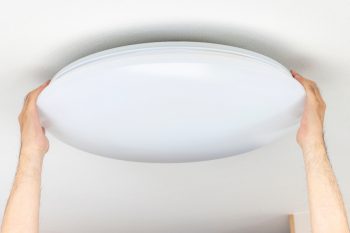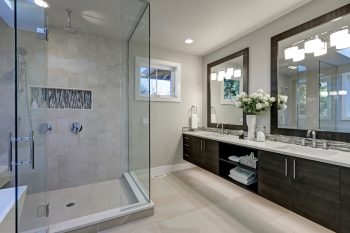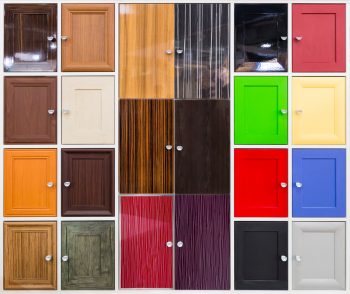
Dark wood floors can tie together a room. However, while we see many examples of light wood floors and how to decorate them in magazines, what you should do in a room with dark wood might be unclear.
What furniture goes well with dark wood floors?
When choosing furniture for a room with a dark floor, there are two rules to follow:
- Preserve balance with heavier furniture.
- A contrasting color scheme lightens the room.
Let’s discuss these two rules in depth and give some examples of these rules in action.
2 Rules for Furniture in Dark Rooms
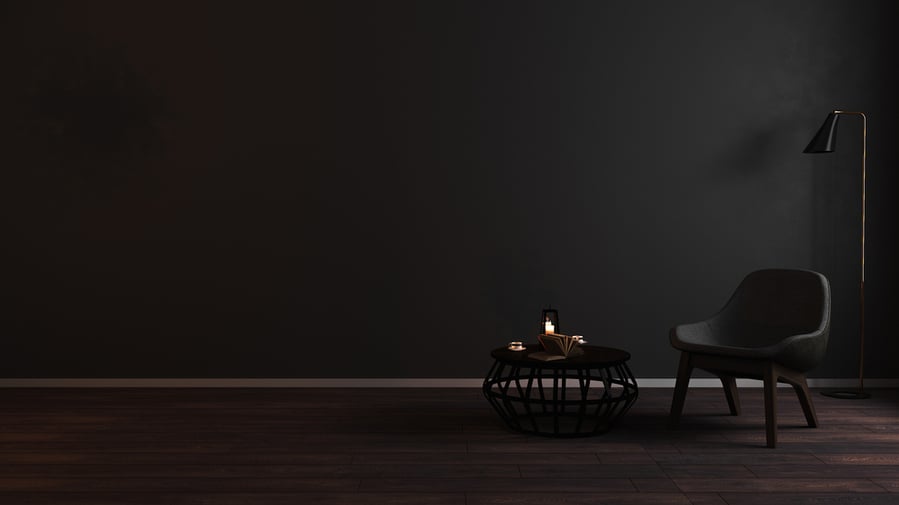
When the floors of a room are dark, you have two concerns:
First, you do not want the furniture to seem too weak for the room.
Second, you want contrasting colors – usually something light instead of something dark.
1. Balance

Balance refers to attempting to have harmonious furniture pieces that do not clash while still holding their own with the rest of the room.
Dark wood is solid and often looks odd when paired with delicate furniture.
For a more balanced design, choose medium to chunky pieces that can hold their own with the strong colors in the room.
2. Contrast

Choosing colors like grey, cream, or pastels fits better with dark-colored wood.
A room with too many dark colors will likely feel small, claustrophobic, and dank.
In contrast, lighter-colored furniture:
- Provides light.
- Opens up the space.
- Softens the room.
Rules in Action
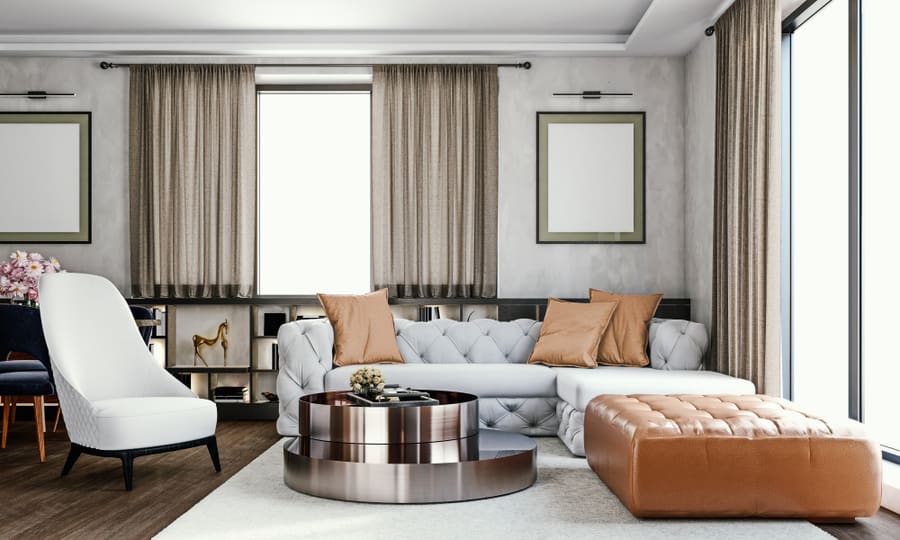
For a clearer picture of what these rules mean, I will describe a piece of furniture that is likely to fit in a room with dark wood floors, one that might and probably won’t:
A Safe Choice

You have a room with dark walnut floors and medium gray walls. You find an oversized dove grey armchair with blocky legs and a matching ottoman at a furniture store.
This chair will probably be a safe choice for your room because it is a lighter color and has a strong shape, so it will not blend over much into the background.
Because it follows both rules, the other furniture pieces and location in the room won’t matter so much to get the effect you want.
A Risky Choice
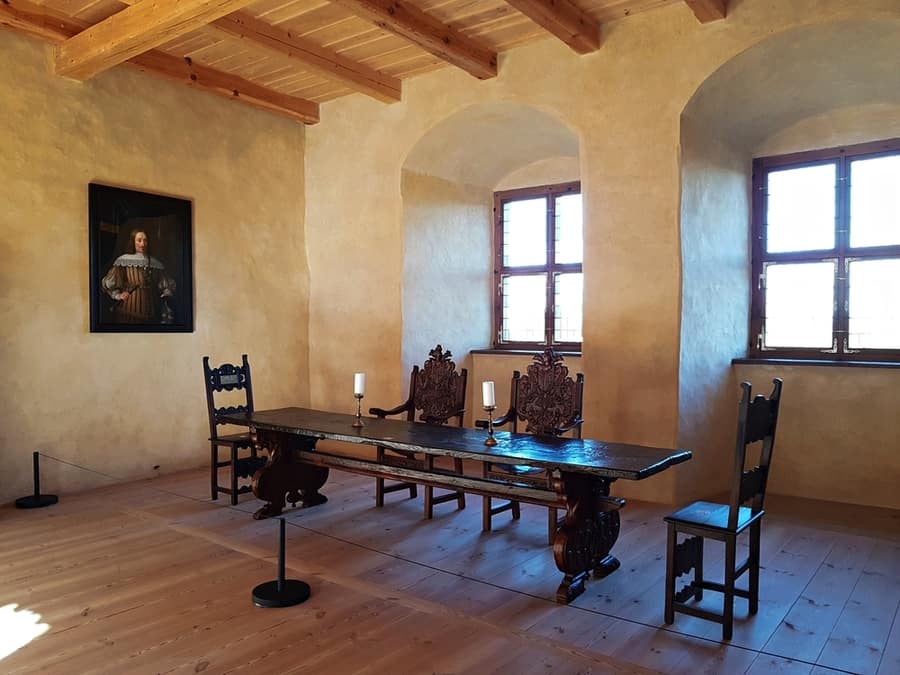
Now, picture the same room with walnut floors and medium-gray walls.
You see an end table you like. This end table has long, thin legs and a spidery appearance. It is white and covered in carvings that look like leaves.
This is a risky choice. The delicate shape of the furniture doesn’t match the more powerful mood of the room, but the bright white color will add brightness and contrast to help it compete.
It might look good with the right all-around design, but it is not as easy to make it look right.
A Bad Choice
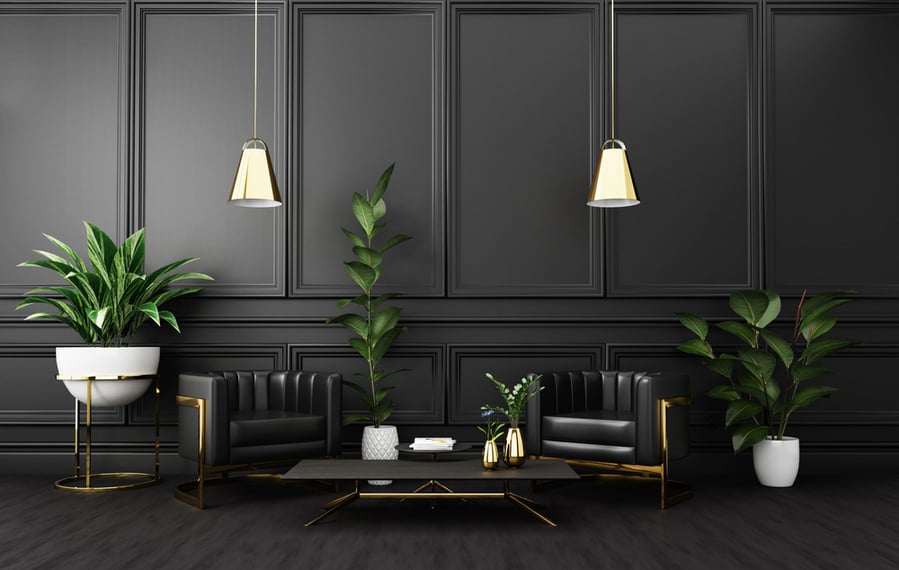
Let’s picture the same room and end table as the previous example.
Now, instead of white, imagine the end table is black. This makes the table a much worse choice because it is too similar to the walls and floor in color and too delicate to hold focus in the room.
It takes a gifted interior designer to make this piece work in a dark-toned room, and I advise avoiding it.
Conclusion
Choosing the furniture in your home is, of course, a matter of personal taste. However, there are some good general rules to avoid design headaches.
When you have a dark wood floor, choosing lighter shades for the furniture helps the room feel bigger and more inviting.
Likewise, larger, more blocky furniture tends to hold attention better in a space with such strong colors.
Following these two rules almost guarantees furniture that meshes with your floors.
Frequently Asked Questions
Should My Floors Be Darker Than My Furniture?
Not always – one of design’s core tenants is contrast. However, you can flip this whichever way you like. Dark floors and light furniture works equally as well as light floor and dark furniture.
Should I Match My Furniture Legs to My Floors?
While contrast is an excellent rule of thumb when designing a room, some matching can help the room feel cohesive.
A wonderful way to introduce a small amount of matching while keeping overall contrast is to match the legs of your furniture as closely as you can to the floor.

